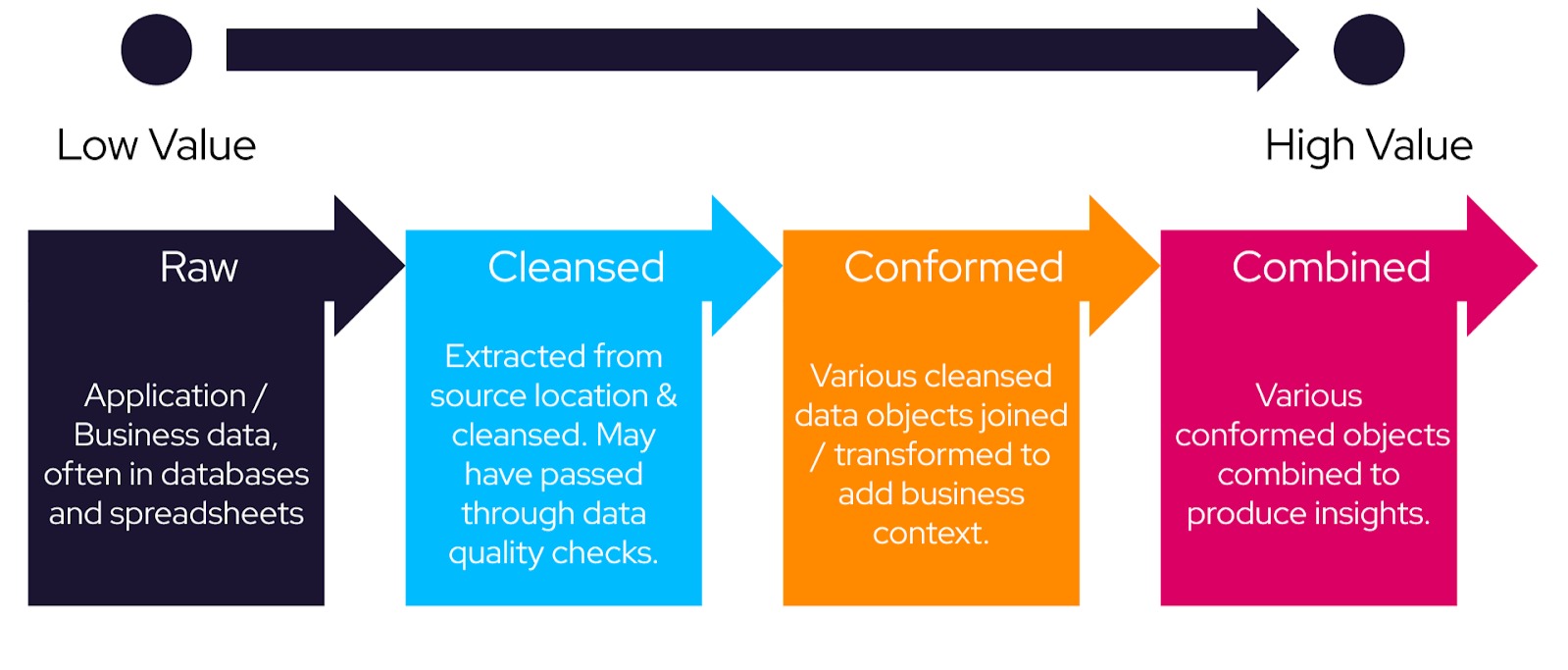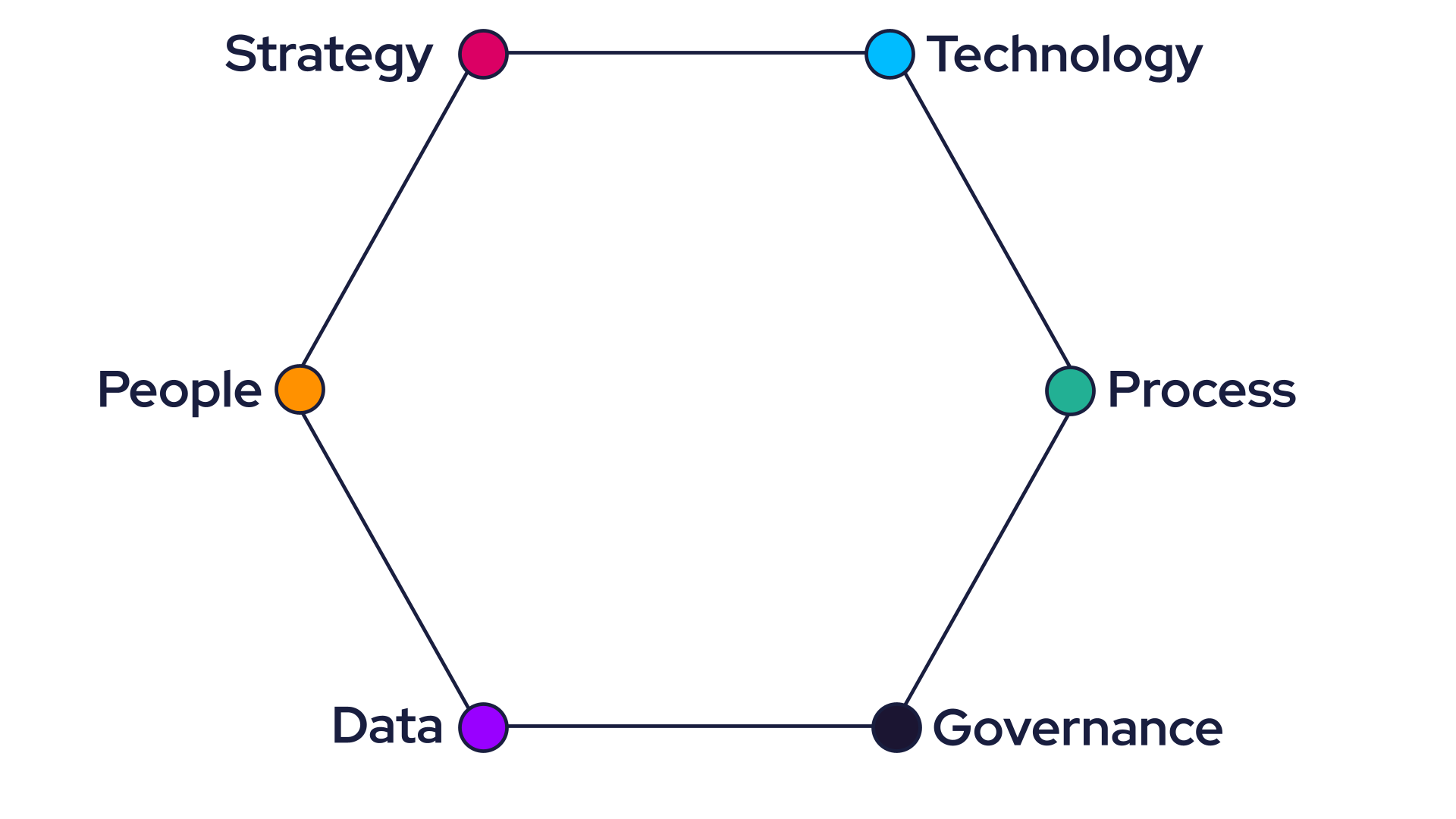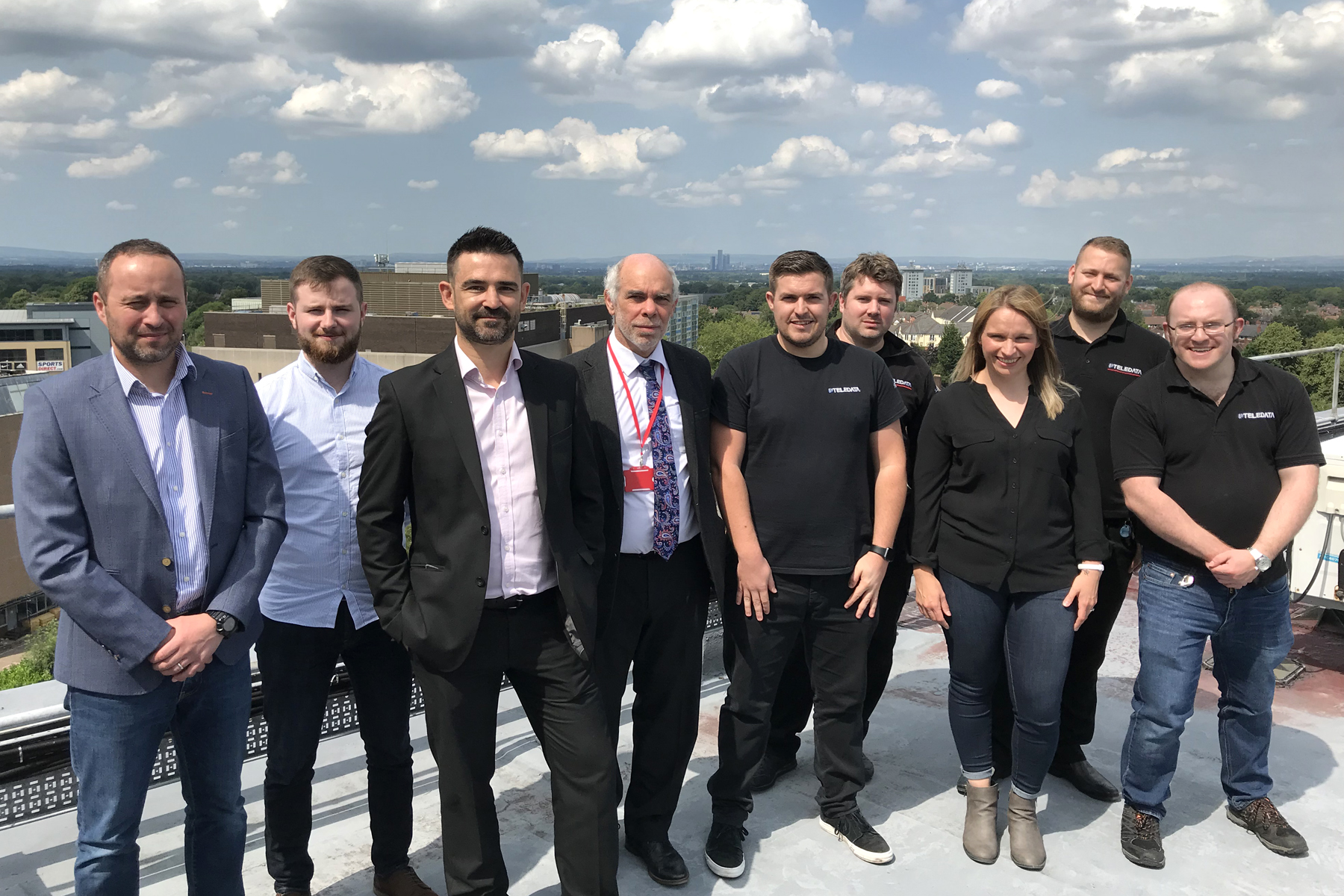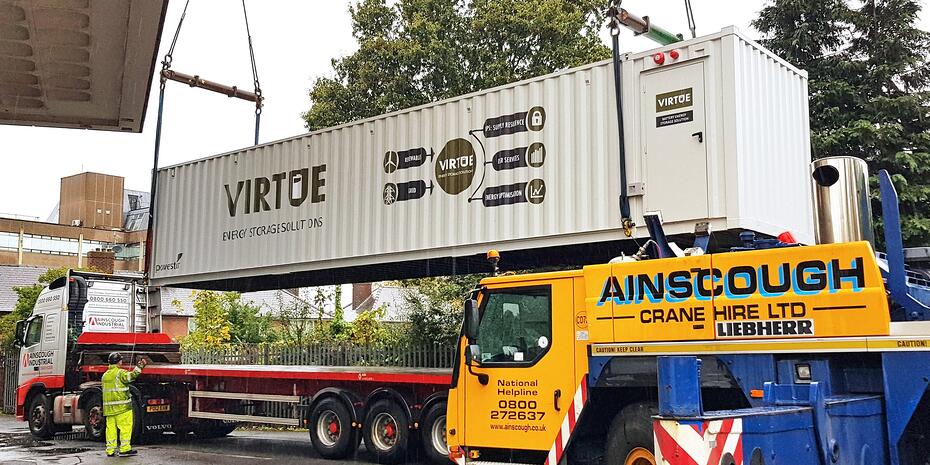
This blog explores why many organisations take a technology-first approach to developing their data capability, how this can limit their ability to realise long-term value, and a more effective way to build lasting data maturity.
Organisations have invested heavily in the data space over the past 10 years, attempting to improve how they acquire, transform, and serve their data to internal and external customers. This push has been fuelled by the growing recognition of data as a key driver of organisational transformation, helping to identify opportunities for both growth and efficiency. It’s also being driven from both the top and bottom of organisations – with executives seeking a strategic edge over competitors, and employees looking to ease the burden of their ever-expanding roles.
Despite widespread investment, many organisations still struggle to achieve the value they anticipated. An Accenture study found that “Only 32 percent of business executives surveyed said that they’re able to create measurable value from data”. This is in part driven by misalignment between expectation and reality when considering the quality and volume of data available, but the most significant blocker is often how these improvements have been approached.
Too often, organisations take a technology-first approach by investing in tools and platforms before clearly defining what is needed for their data to create value. To understand why this happens and how it affects long-term outcomes, it helps to look at how data gains value, why technology is often the starting point, and if there is a different approach.
How Data Becomes Valuable
A good way to start thinking about how to realise value from data is to look at it from a high-level value chain perspective, with the following stages:
- Raw: This is your raw data, distributed across the organisation in various sources such as application databases and spreadsheets.
- Refined: The data has now been extracted from the source, cleansed, and moved to where it can be utilised in downstream processes.
- Conformed: The refined data has been conformed into a usable structure, where it can be used in isolation or combined with other finished components.
- Combined: Combining multiple conformed data components to create more advanced analyses and outputs.

All of these stages have their own complexities that need to be managed to reduce the risk of any issues occurring at both the individual stage and downstream. For data, this is done by considering six key elements: Strategy, Technology, People, Process, Governance, and the Data itself. By building capability in these areas, organisations can better understand and deliver their end-to-end data value chain. This enables them to create conformed components and advanced data products for internal use or to share with external partners.

The Technology-First Approach and its Impact on Value
In an ideal world, organisations would develop and refine their capability across all six areas, unlocking the full potential of their data. In practice, however, the shortcomings of past programmes often create pressure on IT to deliver results quickly. This can drive a technology-first approach, as it’s seen as the fastest way to demonstrate value. Platforms can be deployed rapidly, ingesting and transforming data to produce early outputs and demonstrate short-term success.
At first, this approach appears to work well. But as this new functionality is released, demand grows – from initial users and across the organisation – requiring additional data sources, processes, and outputs. Attention shifts to delivering these outputs, often at the expense of other capability areas, and teams begin to implement workarounds, duplicate processes, and generate fragmented data assets. Over time, the platform that once seemed a major enabler slows down, struggles to meet user needs, and loses their confidence. Coupled with rising operational costs and growing complexity, the early gains gradually erode, leaving organisations to reassess their next steps.
How to Avoid the Technology Trap
To prevent this, those responsible for delivering data initiatives need to show the value of building their overall capability, and not just outputs, in a deliberate and sustainable way:
- Assess your data maturity
What: Understand the current state of your data capabilities and be clear about which areas need improvement to deliver early value. These should be targeted by any downstream work and given the same priority as business-facing outputs.
How: Use a framework – from organisations such as DAMA or CMMI – to help you conduct this assessment, understand where your maturity gaps are, and what to do next. - Prioritise based on foundations and functionality
What: Focus on the use cases that matter most, rather than what may be fastest. Be deliberate about what to tackle first, giving equal consideration to both how the use case matures your capability areas and end user functionality.
How: Ensure that foundational needs are captured as part of the core requirements for user-facing outcomes so that key blockers and conflicts are visible when making prioritisation decisions. - Consider what comes next
What: Consider, as much as is feasible, how each step will support future work – don’t implement solutions in isolation. Outputs should be a by-product of sustainable capability growth and not the sole focus.
How: Build out a realistic roadmap for what you expect to achieve over the next 12 to 18 months, updating this as you move through your initiatives. Make sure this is well communicated and understood, so it can be considered during design and implementation phases. - Be realistic and open
What: Don’t overcommit and be open with the organisation about how and when their needs will be met. Demonstrate to them how improving multiple capability areas, via their initiatives, will enable scalability and a better result in the near future.
How: Use your roadmap and the foundational requirements work to support open conversations with colleagues. Having these aspects will help you communicate what you are tackling and how each component helps them achieve their own goals.
By shifting from a purely technology-first mindset to a capability-focused approach, organisations can avoid the pitfalls of short-term wins and instead build a robust, scalable foundation that delivers real long-term value.
Case Study: Overcoming the Limits of a Technology-First Data Strategy
At Nimble, we’ve seen first-hand how a technology-first approach to data can damage both realising mid- to long-term value and the business buy-in for data initiatives. We recently partnered with a leading cybersecurity re-seller and distributor to help mature their data capability, improving both delivery speed and organisational buy-in. Their original approach focussed on the delivery of a data platform and KPI reports, which were well received. Over time, however, the complexity of the processes and associated data increased much faster than anticipated, leading to a slow down in delivery.
To resolve this, we first had to baseline their data capability in order to understand what the biggest problem areas were. Once complete, we planned and implemented improvements to delivery and technical processes, team skills, data architecture, documentation, and the platform itself. This improvement in overall data capability allowed us to then support them on developing new business facing outputs at a much greater pace, with each one including elements to continue improving the six key capability areas.
Key Takeaways
Data is a powerful asset, but its value depends on several key elements that should all be developed in order to maximise the return in the medium to long-term. Quick technology-led wins are tempting, but this can create complexity and limit long-term impact if the other foundational capabilities are ignored.
To truly succeed, organisations need a realistic, capability-focused approach. By focusing on sustainable capability growth rather than short-term outputs, organisations can maximise the value of their data and avoid the common pitfalls of a technology-driven approach.









